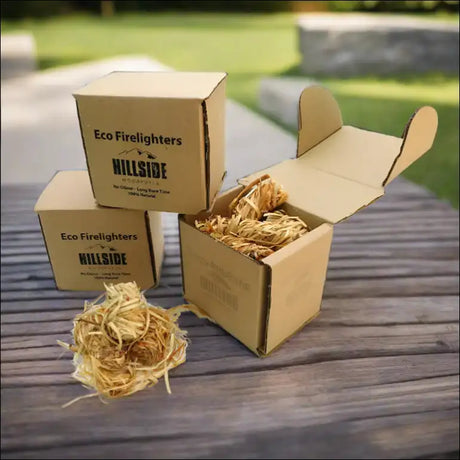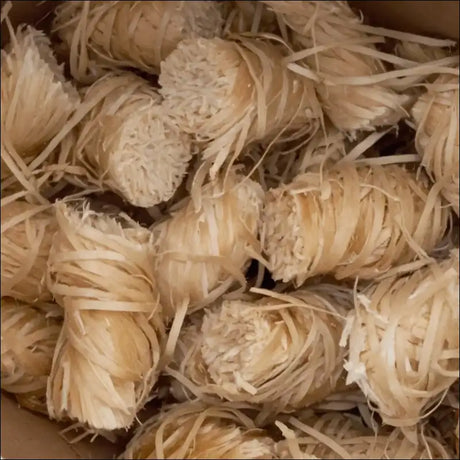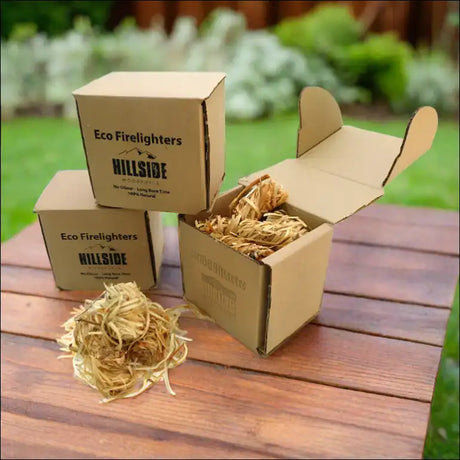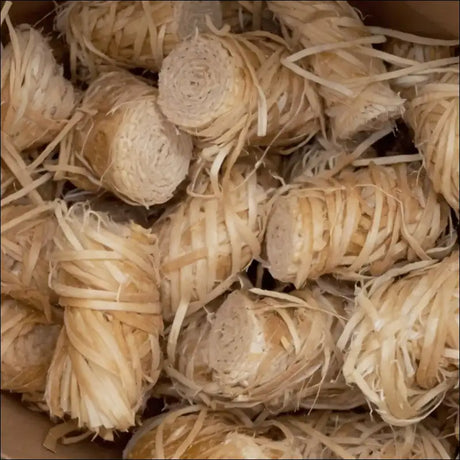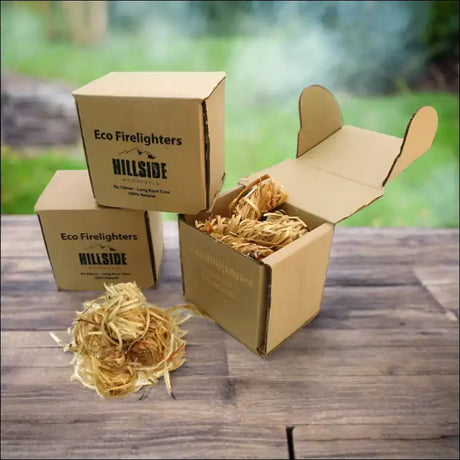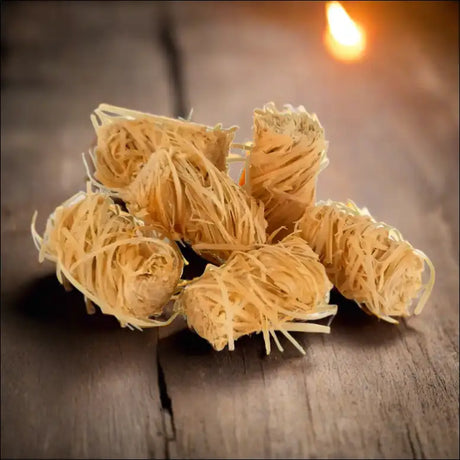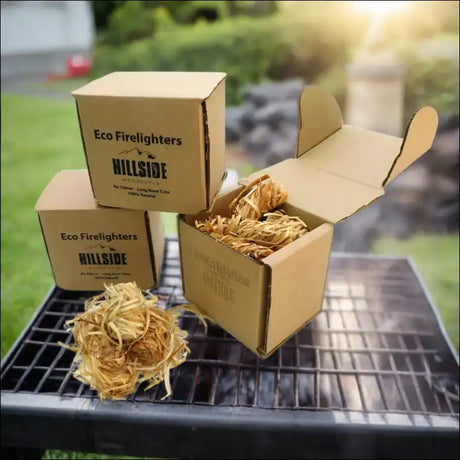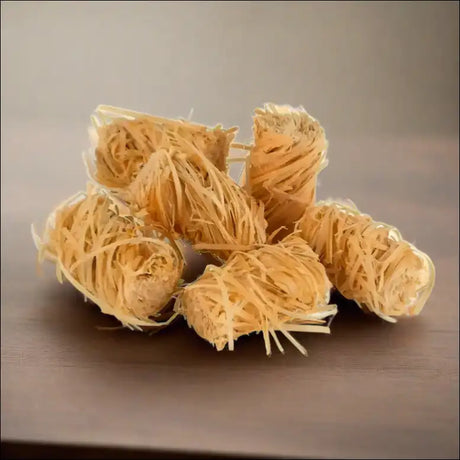The sweet scent of applewood chips burning gently. The sound of juicy meats sizzling softly over a low flame. The excitement of friends gathering in a cosy backyard. These are signs of mastering low slow grilling. This method needs both skill and patience to reach perfect taste. In the UK, from lively London to the peaceful Lake District, people are enhancing their outdoor cooking with low slow grilling.
So, what is this technique that turns a basic barbecue into a feast for the senses? Low slow grilling means cooking food at low temperatures for a longer time than usual. It avoids rushing, letting flavours deepen and textures soften. Every bite shows your skill. Whether it's pork shoulder or eggplant, low slow grilling makes everything tastier.
Key Takeaways
- Low slow grilling is the secret to unlocking profound flavours and achieving supreme tenderness in your culinary creations.
- Mastering grilling requires patience and precision to maintain the delicate balance of temperature and time.
- Grilling techniques vary dramatically from the quick char of high heat to the intricate low and slow process, each with its merits.
- Becoming a master of low slow grilling elevates the barbecue experience, transforming weekend gatherings into delicious events.
- Selecting the right equipment and knowing the nuances of this cooking method are essential steps on the journey to low slow grilling expertise.
Introduction to Low Slow Grilling
Starting with low slow grilling brings a mix of tastes to enjoy, blending tradition with charcoal cooking. It's a blend of ancient wisdom and the zest of fire. This technique is more than cooking; it's a bond with food that grows from patient effort.
Embrace the Patience and Confidence for Charcoal Cooking
When BBQing, rushing can spoil the flavor. The gentle glow of charcoal teases out fragrances, perfected by time. This low and slow method means tough meats become tender delights.
Understanding the Basics and Benefits of Low and Slow
To value low slow grilling, look at restaurant-grade charcoal. It burns hot, ideal for searing meats. This type of charcoal cooks evenly, is better for the planet, and is cheaper in the long run.
By choosing low slow grilling, you control the process better, keeping the food's flavors intact. This gentle grilling technique adds a smoky touch nothing else can. Plus, high-quality charcoal works for many dishes and grills, enhancing every meal.
Getting the fire right is key. Use tools like chimney starters and natural firelighters. Good air flow and temperature control ensure perfect grilling. This method works great, whether you use a classic or modern grill.
Essential Equipment for Low Slow Grilling
If you love low slow grilling, getting the right tools and clothing is key. It's not just for fun, it's for cooking amazing food safely and well. With the right gear, you'll be set to make delicious meals.
Selecting the Right Thermometer and Gloves
Knowing your grill's temperature is crucial for low slow grilling. A good thermometer can help avoid undercooked or overcooked food. Gloves that resist heat help you handle everything without getting burnt. This way, you manage your BBQ and food like a pro.
The Importance of a Quality Apron and Chimney Charcoal Starter
A apron is more useful than it seems. It holds your thermometer, so you're always ready to check the heat. Also, using a chimney charcoal starter gets your coals hot quickly. This means your grill is ready faster for perfect cooking.
Every BBQ lover knows the charcoal you use matters. Choosing restaurant-grade lump charcoal is good for the planet. It burns longer and makes less ash. Charcoal from oak, hickory, maple, and mesquite adds a special flavor.
Eco-friendly charcoal comes from places that care for forests. Suppliers like Hillside Woodfuels offer top-notch charcoal for BBQ. They provide authentic charcoal from the Americas, perfect for UK BBQ fans.
High-quality charcoal is not just for BBQs. It's also great for filtering, drawing, and even helping plants grow. It's a clean, versatile product that's eco-friendly too. Get the best grill gear and enjoy the best in grilled food.
Setting Up Your Grill for Low Slow Success
Starting your journey in low slow grilling is more than just patience. You need to set up your grill right, so the temperature stays even. This is key for cooking amazing dishes. So, let's talk about how to handle charcoal and set up a perfect grilling area.
Charcoal Management and Temperature Control
The key to low slow grilling is knowing how to manage your charcoal. How you arrange coals affects the grill's temperature and how your food cooks. It's important to understand air flow and how to spread your coals. By checking and tweaking your grill's vents, you control the charcoal burn. This helps keep the temperature just right.
Creating different zones on your grill is a clever move. Use one side for direct heat from coals, and keep the other side coal-free for indirect heat. This two-zone method gives you control and flexibility while cooking.
Crafting the Perfect Grilling Environment
Controlling your charcoal is just one part of the process. Making the right outdoor grilling space is also crucial. Choose a spot that's protected from the wind. This prevents sudden changes in temperature, ensuring your food cooks evenly and slowly.
| Task | Action | Benefit |
|---|---|---|
| Charcoal Placement | Create direct and indirect zones | Allows for versatile cooking and better heat control |
| Vent Adjustment | Regulate airflow to manage heat | Maintain consistent temperature and prevent flare-ups |
| Environmental Consideration | Set up in sheltered area with minimal wind | Reduces risk of temperature fluctuation for steady grilling |
Having a setting up grill plan is essential for perfect low slow grilling. Paying attention to charcoal management and the cooking environment prepares you for success. This way, you achieve the flavours and textures that define this cooking method.
The Art of Timing and Temperature in Low Slow Grilling
The art of low slow grilling relies on understanding timing and temperature. Like a conductor with an orchestra, the Pitmaster balances heat and time. This balance brings meat to perfect tenderness.
How to Recognise the 'Stall' and Manage It
When grilling slowly, meat might stop warming up at a point. This is called the stall. It happens when meat sweats, cooling itself. Knowing how to slowly raise the temperature is key to moving past this.
Using lumpwood charcoal is a game-changer. It burns hotter, giving better control over heat. This makes it easier to deal with the stall.
Understanding the Physics Behind Meat Temperatures
Knowing how meat heats up is crucial for low slow grilling. Every cut has a perfect temperature where it's most tender. The meat becomes soft and flavourful as it cooks.
Lumpwood charcoal makes the meat taste better. It burns clean, adding smoke flavour without chemicals. This keeps the meat at the right temperatures.
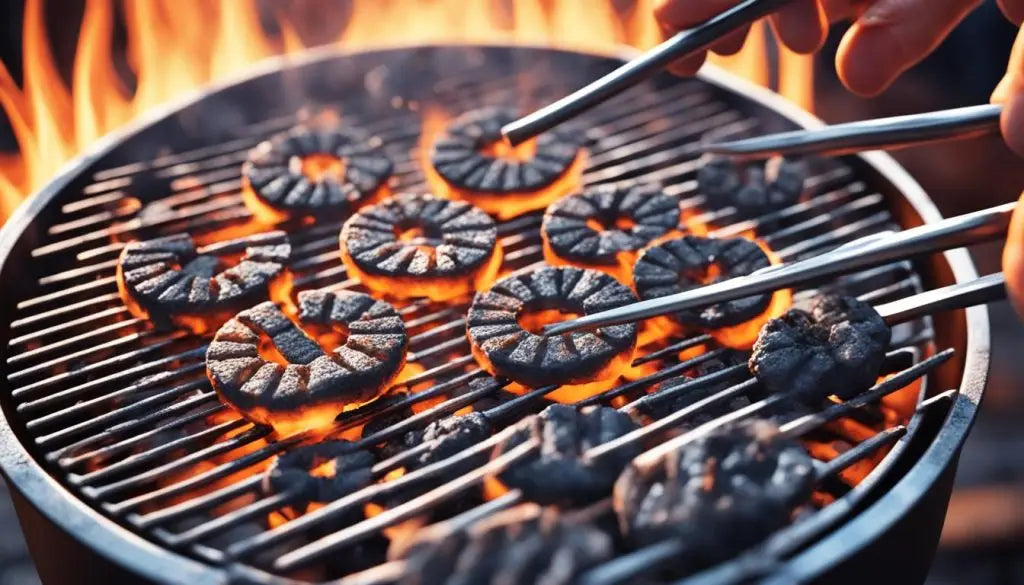
| Lumpwood Charcoal Characteristics | Impact on Low Slow Grilling |
|---|---|
| Quicker Ignition Time | Makes starting cooking easier. |
| High-Quality Wood Types | Adds unique flavours and smells. |
| Natural Composition & Additive-Free | Keeps cooking healthy and genuine. |
| Longer & Hotter Burn | Helps cook evenly and reach the right meat temperatures. |
| Environmental Considerations | Supports cooking that cares for the planet. |
Mastering Different Meats with Low Slow Grilling
Low slow grilling makes every meat taste better, from juicy chicken to flavorful beef brisket. Each meat needs its own way of cooking to bring out the best taste and texture. This is true for both tender poultry and hearty red meats.
Starting with chicken is easy because it quickly picks up smoky flavors. But moving on to beef brisket is a true challenge. Using barbecue spice rubs brings your grilling up to the level of pros.
Starting with Chicken and Advancing to Beef Brisket
Chicken cooks faster, so it's good for new grillers. Knowing how each cut reacts to low heat is key. Thighs and drumsticks become wonderfully tender. But, chicken breasts need careful watching to stay moist.
Tackling Various Cuts for Optimal Flavor and Texture
Beef brisket is harder to master than chicken. It has a lot of connective tissue which slowly transforms into tasty, tender meat under low heat. This slow process creates a delicious, smoky crust on the brisket.
Choosing the right spice rub makes all these meats taste amazing. With 24 BBQ Spice Rub products available, you can explore flavors from around the world with each cook.
| Product | Format | Price Range | Cuisine Inspiration |
|---|---|---|---|
| Vegan BBQ Collection | 240g Shaker | £6.95 - £60.95 | Global |
| American BBQ Favourites | 240g Shaker | £6.95 - £60.95 | American |
| Asian Street Food Spices | 240g Shaker | £6.95 - £60.95 | Asian |
| Mexican Fiesta Blend | 240g Shaker | £6.95 - £60.95 | Mexican |
Spice rubs fit any budget, from £6.95 to £60.95. With all 24 spice rub items ready to go, you're all set for your next grilling session. Every rub adds a special touch to the meats you cook.
Flavor Infusions: Smoking with Wood Chunks
Using smoking with wood chunks adds depth to your grilling. Before picking wood, understand how it changes a dish. The right wood means tasty infusions for every type of meat.
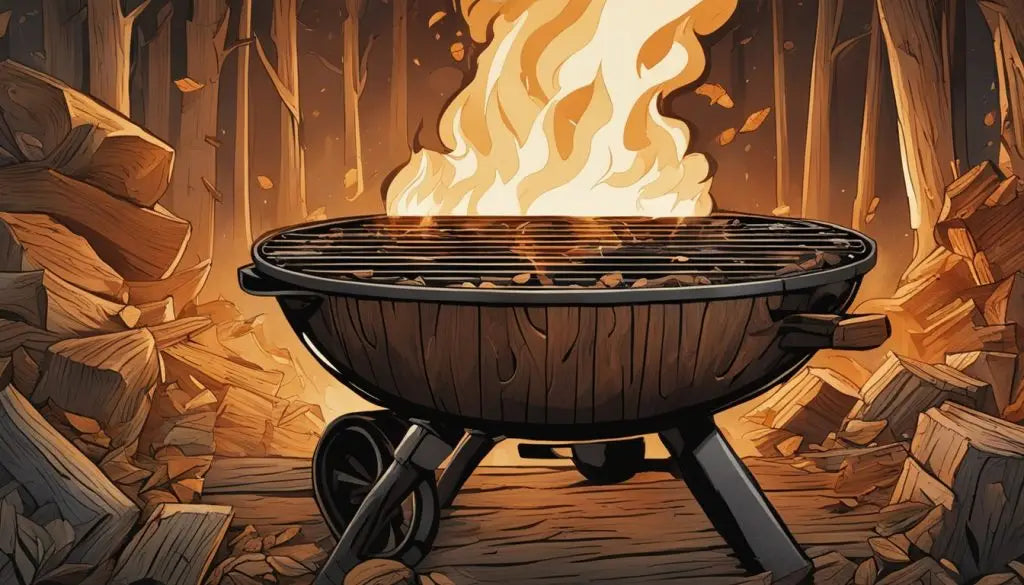
For the best low slow grilling, choose the right charcoal. Restaurant-grade lumpwood charcoal burns hot and starts fast. It's preferred by chefs worldwide.
Choosing the Right Type of Wood for Each Meat
Different woods suit different meats, changing how your food tastes. This choice matters for both taste and cooking. Below, find a table that shows which woods match well with certain meats.
| Wood Type | Meat Pairing | Flavour Profile |
|---|---|---|
| Apple | Pork & Poultry | Sweet, mellow |
| Hickory | Pork & Beef | Strong, bacon-like |
| Maple | Pork & Poultry | Mildly smoky, sweet |
| Oak | Beef & Lamb | Medium smoky, versatile |
| Mesquite | Beef & Game | Intense, earthy |
| Cherry | Poultry & Game Birds | Fruity, sweet |
When picking wood for smoking, choose sustainably sourced wood. This helps protect forests for the future.
In conclusion, your choice of wood, from hickory's robustness to apple's sweetness, turns a simple barbecue into a gourmet event. Embrace flavor infusions to enhance your grilling skills.
Maintaining and Manipulating the Grill's Heat
The secret to perfect barbecuing lies in expertly maintaining grill heat and manipulating heat. This means adjusting the heat to suit the dish you're cooking. Mastering both low slow grilling and high heat techniques can make your food go from good to great. Here are easy tips to help you handle the heat when cooking outdoors.
Low Slow Grilling versus High Heat Techniques
Low slow grilling is great for making tough meat soft and tasty. Think brisket or pork shoulder. It cooks slowly, but the result is very rewarding. On the other hand, high heat techniques quickly cook the outside of steaks or burgers. This keeps the inside juicy and delicious.
To get the best out of these methods, remember these heat management tips:
- Keep a steady temperature, around 225 - 250 degrees Fahrenheit, for maintaining grill heat during low and slow cooking. Keeping the heat stable is key to avoid longer or shorter cooking times.
- Understanding how to adjust your grill's vents for manipulating heat is crucial. Vents control the oxygen, which impacts the fire and temperature.
- Using a water pan for low slow grilling can help manage the grill's moisture. This makes the heat more stable and even.
- When applying high heat techniques, cook directly over the coals. It's important to keep an eye on the food to avoid burns and to move it if it gets too hot.
Whether you prefer low slow grilling or the excitement of high heat techniques, controlling your grill is key. Get to know how your grill works. Always have your tools ready. Remember, you're in control of the fire. With the right heat management, you're on your way to great grilling results.
Patience Pays Off: The Virtues of Low Slow Grilling
Exploring the virtues of low slow grilling shows a mix of tradition, skill, and science wonder. It's cooking where time pauses, letting flavour bloom with constant heat. Fans love it for the way it softly changes the meat inside a well-kept grill.
The Science of Meat Transformation at Lower Temperatures
Cooking meat slowly happens at cooler temps than fast grilling. This slow method brings out changes in proteins, fats, and tissues. It creates textures and smells that can't be hurried.
Collagen in cheaper cuts turns into gelatine after hours at low heat. This makes the meat tender and full of flavours that only slow cooking can unlock.

This cooking method softens harsh acids and gently breaks down fibres. It's almost like a special ceremony for the meat. Paying attention and being patient can lead to amazing results. Low slow grilling mixes science and pleasure in a unique way.
- Consistent Heat Distribution: Low heat makes sure the meat cooks evenly without burning the outside.
- Moisture Retention: Cooking slowly keeps the meat juicy, stopping it from drying out like it might at higher temperatures.
- Enhanced Flavour Development: The long exposure to smoke and heat deeply infuses the meat with flavour, creating a tasty crust and juicy inside.
- Reduction of Harmful Chemicals: Lower temperatures mean fewer harmful chemicals are formed, making this a healthier way to grill.
Low slow grilling is about enjoying the cooking process and the delicious results. Light your fire, season your meat, and get ready for a journey. It respects the relationship between cook, meat, and flame. It shows patience and care are key in barbecuing: good things indeed come to those who wait.
Low Slow Grilling Recipes to Get You Started
Welcome to the delightful world of low slow grilling recipes. No matter if you're starting out or already a pitmaster, the recipes you'll discover here will make you more confident at the grill. These tried and tested favorites provide a variety of options showcasing that low slow grilling is more than a cooking method, it's a lifestyle. Enjoy the journey as much as the outcome, letting these recipes guide your leisurely Sundays and get-togethers.
A Collection of Tried and Tested Favourites
From tender brisket to juicy pork ribs, every recipe is a peak of taste and softness from low slow grilling. Each one takes you through a delicious mix of textures and flavors, celebrating the patience low slow grilling demands. Delight your friends and family with amazing dishes from your grill.
| Dish | Main Ingredients | Grill Time | Wood Type for Smoking |
|---|---|---|---|
| Classic Beef Brisket | Beef brisket, sea salt, black pepper | 10-12 hours | Oak or Hickory |
| Pulled Pork Perfection | Pork shoulder, brown sugar, paprika, cumin | 8 hours | Apple or Cherry |
| Smoky BBQ Ribs | Pork ribs, BBQ sauce, garlic powder, onion powder | 4-5 hours | Mesquite or Pecan |
| Succulent Smoked Chicken | Whole chicken, thyme, lemon, butter | 3-4 hours | Maple or Alder |
Start your low slow grilling journey with these recipes, exploring each cut and its best spices. The charm of these tried and tested recipes is in their straightforwardness and the peaceful cooking process. So, light up the grill, take your time, and get ready to wow your taste buds!
Conclusion
Starting your low slow grilling journey is like attending a masterclass in flavours and methods. We've explored the art of managing embers and smoking with wood chunks. This technique turns simple meat cuts into culinary delights, making your barbecue a showcase of your cooking skill.
As we end our discussion, it's clear that low slow grilling is a unique way to cook outside. It needs both patience and skill. The techniques we've talked about can impress anyone with their taste. We've given you the basics; now, it's your turn to keep practicing these skills.
Remember, becoming a pro at low slow grilling takes constant learning and love for the craft. With the tips from this guide, you're ready to try new things and find your own barbecue style. Whether you're starting or already good at grilling, these tips will help you get better. So, as the warm weather comes, enjoy grilling outside. Let the delicious smells of your creations fill your next outdoor party.
FAQ
What is low slow grilling?
Low slow grilling is cooking food on low heat for a long time. It's great for tough meats, making them tender and full of flavour.
Why is patience important in low slow grilling?
Because it takes longer than grilling on high heat. The slow process lets flavours develop and meat become tender.
What are the benefits of low and slow cooking?
It makes meat tender by breaking down connective tissues. Flavours also go deeper into the food, making it tastier.
What equipment do I need for low slow grilling?
You need a reliable thermometer, heat-resistant gloves, a sturdy apron, and a charcoal starter for easy lighting.
How do I set up my grill for low slow grilling?
Manage your charcoal and control the temperature. Setting up the right environment is key to good flavour and tenderness.
What is the 'stall' in low slow grilling?
The 'stall' is when meat's internal temperature stops rising for hours. It's a normal part of the process.
How does temperature affect the texture and taste of grilled food?
The right temperature is crucial. It determines how soft or firm the food is and its flavour.
Can I use low slow grilling with different types of meat?
Yes, it works with many meats like chicken and beef brisket. Each type might need specific cooking times for best results.
How can I infuse flavor into my low slow grilled food?
Use wood chunks for smoking. They add unique flavours, enhancing the grilling experience.
How do I maintain and manipulate the heat of my grill for low slow grilling?
Control the grill's heat by managing airflow and charcoal. This ensures your food cooks evenly and tastes great.
How does low slow grilling transform meat at lower temperatures?
It slowly breaks down the connective tissues, making the meat tender and juicy. Lower temperatures also keep the moisture in and prevent drying out.
Where can I find low slow grilling recipes?
Check out these tried and tested recipes to kickstart your low slow grilling. They're designed for delicious results.


